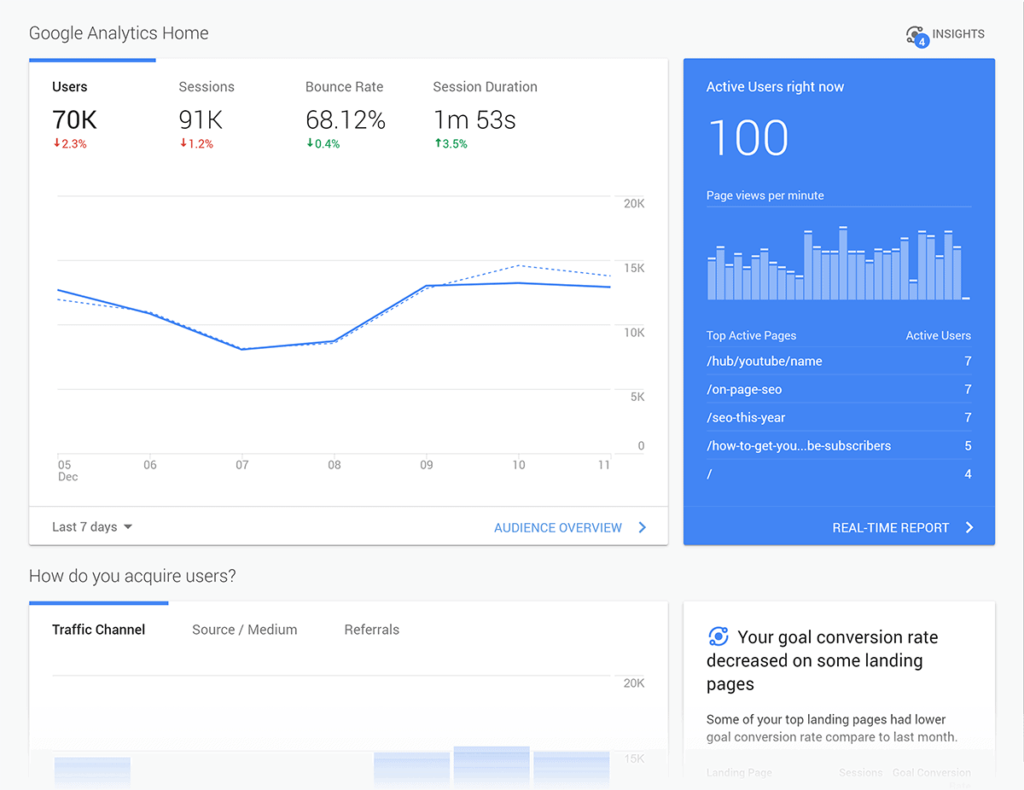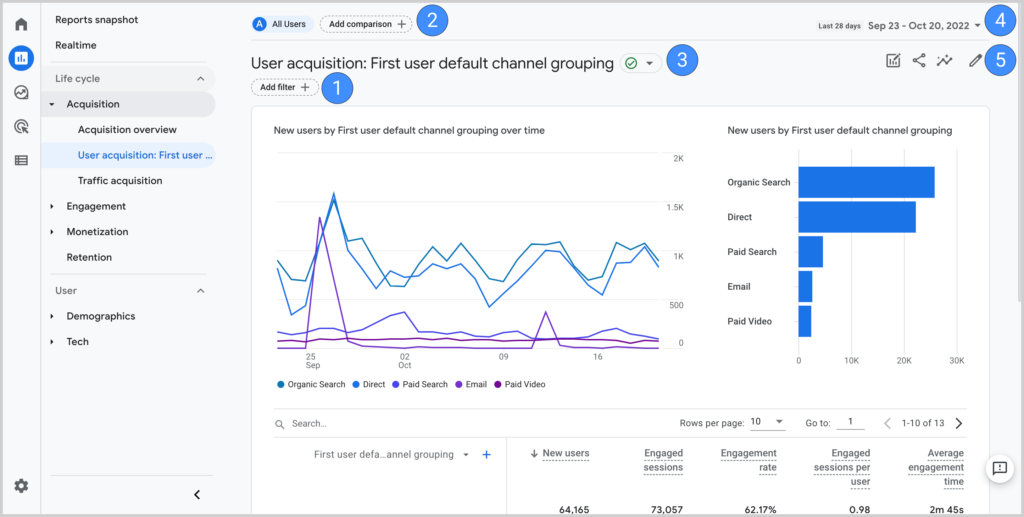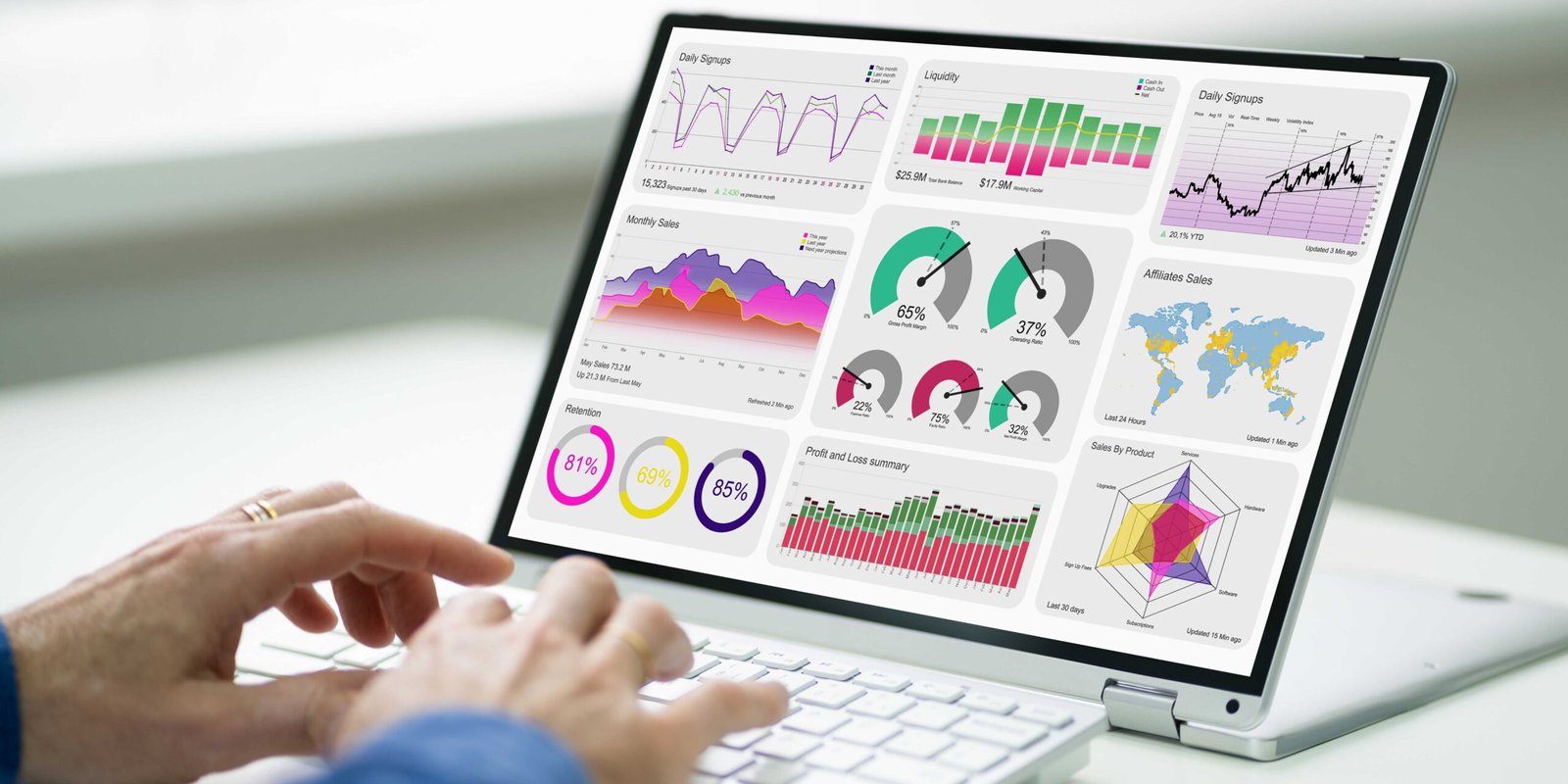Introduction:
In today’s data-driven world, analytics has become an indispensable tool for businesses and individuals alike. Whether you’re running a website, managing an online store, or tracking the success of a marketing campaign, leveraging analytics can provide invaluable insights to optimize your performance. In this article, we will explore the best practices and point-wise tips on how to use analytics to track your results effectively. From setting up analytics tools to analyzing data and making data-driven decisions, we’ve got you covered with valuable analytics tracking tips.
Table of Contents
1. Understanding Analytics Tracking Tips
Analytics refers to the systematic analysis of data to uncover meaningful insights and trends. It involves collecting, organizing, and interpreting data to make informed decisions and drive improvements. By utilizing analytics, businesses can gain a deeper understanding of their target audience, measure the effectiveness of their strategies, and identify areas for optimization.
In this article, we will provide you with analytics tracking tips, including the best practices and expert advice on how to effectively track and analyze data. These analytics tracking tips will help you harness the power of data and make the most out of your analytical endeavors. With a focus on improving your results and achieving your goals, we’ll guide you through the process of leveraging analytics to its fullest potential.
2. Setting Up Analytics Tools
To start tracking your results, you need to set up analytics tools that align with your goals. Some popular options include Google Analytics, Adobe Analytics, and Matomo. These analytics tracking tools provide a wide range of features and functionalities to track various metrics. Begin by creating an account on your chosen analytics platform, installing the tracking code on your website, and configuring the necessary settings. By implementing these analytics tracking tips and setting up the right tools, you’ll be able to collect and analyze data effectively, gaining valuable insights into your performance and making informed decisions to optimize your results.
3. Key Metrics to Track
To start tracking your results and make the most out of your analytics efforts, it is essential to set up analytics tools that align with your goals. Some popular options for analytics tracking include Google Analytics, Adobe Analytics, and Matomo. These tools offer a wide range of features and functionalities to track and measure various metrics relevant to your business. To get started, create an account on your chosen analytics platform, then install the tracking code provided by the tool on your website. Ensure that you configure the settings according to your specific requirements.
By implementing these valuable analytics tracking tips and setting up the appropriate tools, you will be able to collect and analyze data effectively. This process will enable you to gain valuable insights into your performance and make informed decisions to optimize your results. With the power of analytics at your fingertips, you can uncover patterns, trends, and areas for improvement that will ultimately lead to better outcomes for your business.
4. Analyzing Website Traffic
Website traffic analysis is crucial for understanding your audience and improving user experience. By implementing analytics tracking tips, such as analyzing website traffic, you can gain valuable insights into how users are finding and interacting with your site. Begin by examining the sources of traffic, which may include organic search, social media platforms, or referral links. Understanding the origin of your traffic will help you focus your efforts on the most effective channels.
Next, identify high-performing pages on your website. These are the pages that attract the most visitors, engage users, and drive conversions. Analyze the characteristics of these pages and replicate their success across other areas of your website.
Simultaneously, identify underperforming pages that may have high bounce rates or low engagement. By identifying these pages, you can take steps to optimize them for better user experience and higher conversion rates. This could involve improving the page layout, enhancing the content, or implementing stronger calls-to-action.
To further tailor your website content, dive deeper into demographic data, geographic location, and user behavior. Analyze analytics data to understand the demographics of your audience, such as age, gender, and interests. Additionally, examine the geographic location of your visitors to better cater to regional preferences or offer localized content. By understanding user behavior, including click patterns, session duration, and navigation paths, you can make data-driven decisions to enhance the user experience.
By leveraging analytics tracking tips, you can transform your website traffic analysis into actionable insights. This knowledge allows you to optimize your website’s performance, provide a better user experience, and ultimately achieve your business goals.
5. Monitoring User Behavior
Understanding how users interact with your website is key to optimizing their experience. Track user behavior metrics such as click heatmaps, scroll depth, and session recordings. Identify common user paths, entry and exit points, and areas where users might face difficulties. Use this data to enhance your website’s usability, navigation, and conversion paths.

6. Tracking Conversion Rates
Conversion rates indicate how effectively your website or landing pages are generating desired outcomes. These outcomes can range from making a purchase, filling out a form, subscribing to a newsletter, or any other desired action. By tracking conversions and implementing analytics tracking tips, you can gain insights into the performance of your conversion funnel and identify areas for improvement.
7. Measuring Campaign Performance
For businesses running marketing campaigns, tracking performance is essential to evaluate their effectiveness. By implementing analytics tracking tips, you can set up campaign tracking parameters to measure the success of your campaigns across different channels.
One crucial step is to establish campaign tracking parameters, such as UTM (Urchin Tracking Module) parameters, which add unique tags to your campaign URLs. This allows you to track and analyze the performance of each campaign separately. By tagging your URLs, you can identify the specific sources, mediums, and campaigns that drive traffic to your website.

Once your campaigns are properly tagged, you can monitor metrics that provide insights into their performance. Key metrics to track include click-through rates (CTR), which indicate the percentage of users who click on your ads or campaign links. Conversion rates are also important, as they measure the percentage of users who complete a desired action, such as making a purchase or filling out a form. Another crucial metric is the return on ad spend (ROAS), which evaluates the profitability of your advertising investment.
By monitoring these metrics and analyzing the data, you can gain valuable insights to refine your targeting, messaging, and budget allocation. For instance, if a particular campaign has a low CTR, you may need to optimize your ad copy or creative to increase engagement. If conversion rates are low, you might want to review your landing page design or the clarity of your call-to-action.
Additionally, analyzing the ROAS can help you assess the profitability of your marketing campaigns. By evaluating the return on investment for each campaign, you can make data-driven decisions about budget allocation and identify areas for optimization.
Regularly review and analyze the performance of your marketing campaigns using the data collected through campaign tracking. Identify successful strategies and tactics, and apply them to future campaigns. Simultaneously, learn from underperforming campaigns to understand areas that need improvement and refine your approach accordingly.
By effectively tracking and analyzing campaign performance, you can make informed decisions to optimize your targeting, messaging, and budget allocation. This allows you to maximize the effectiveness of your marketing campaigns, increase their overall impact, and achieve better results for your business.
8. Analyzing Social Media Analytics
Social media platforms provide valuable analytics that can help you measure the impact of your social media efforts. By implementing analytics tracking tips, you can effectively analyze the performance of your social media presence.
Begin by examining metrics such as engagement, reach, followers, and clicks. Engagement metrics include likes, comments, shares, and overall interactions with your social media posts. Reach refers to the number of unique users who have seen your content. Followers represent the size of your social media audience. Clicks indicate the number of times users have clicked on your links or call-to-action buttons.
Analyzing these metrics allows you to gain insights into the effectiveness of your social media strategy. Identify the types of content that resonate most with your audience based on high engagement rates. Pay attention to the topics, formats, and styles that generate the most likes, comments, or shares. Adjust your social media strategy accordingly to prioritize content that aligns with your audience’s preferences.
Leverage social media analytics to optimize your content calendar and drive better results. Use the data to inform your decision-making when planning and scheduling social media posts. Determine the optimal times to post based on when your audience is most active. Additionally, analyze the performance of different types of content, such as images, videos, or articles, to determine which formats are most effective in engaging your audience.
Furthermore, social media analytics can help you identify trends and patterns in your audience’s behavior. Determine which platforms are generating the highest engagement and focus your efforts on those channels. Identify the demographics of your social media audience to tailor your content and messaging accordingly.
Regularly track and analyze your social media analytics to monitor the impact of your social media efforts. Make data-driven decisions to refine your social media strategy, optimize your content, and achieve better results. By leveraging social media analytics effectively, you can maximize the impact of your social media presence and drive engagement and growth for your brand.

9. Utilizing Email Analytics
Email marketing remains a powerful tool for businesses, and tracking email analytics is crucial to measure its effectiveness. Monitor metrics such as open rates, click-through rates, and unsubscribe rates. Segment your email lists and analyze the performance of different campaigns and email variants. Use this data to refine your email marketing strategy and deliver more targeted and engaging content.
10. Analyzing E-commerce Metrics
For online stores, tracking e-commerce metrics provides valuable insights into customer behavior and revenue generation. Monitor metrics such as conversion rates, average order value, and cart abandonment rates. Analyze product performance, identify popular and underperforming items, and optimize your pricing and promotions based on data-driven insights. Apply the analytics tracking tips to get more conversion and ROI.
11. Leveraging Mobile App Analytics
If you have a mobile app, leveraging mobile app analytics is essential to understand user behavior and improve app performance. Track metrics such as app downloads, active users, session duration, and in-app purchases. Analyze user flows, screen views, and app crashes to enhance the user experience. Use push notifications and personalized recommendations based on user data to drive engagement.
12. Understanding Customer Analytics
Customer analytics involves analyzing customer data to gain insights into their preferences, behaviors, and buying patterns. Utilize customer relationship management (CRM) systems to track customer interactions and touchpoints. Analyze data such as customer lifetime value, customer churn rate, and customer segmentation to tailor your marketing efforts and improve customer satisfaction.
13. Exploring Heatmaps and User Recordings
Heatmaps and user recordings provide visual representations of user behavior on your website or app. Heatmaps highlight areas of high and low user engagement, while user recordings show real-time user interactions. Analyze heatmaps to optimize website layout, call-to-action placements, and form fields. User recordings help identify usability issues, allowing you to enhance the user experience.
14. Analyzing SEO Analytics
Tracking SEO analytics is essential for improving your organic search visibility. Monitor metrics such as keyword rankings, organic traffic, and backlink profiles. Identify high-performing keywords and optimize your website’s on-page and off-page SEO elements. Use data-driven insights to refine your content strategy, attract more organic traffic, and increase search engine rankings.
15. Interpreting Data Visualization
Data visualization plays a crucial role in simplifying complex analytics data and making it easier to understand. Utilize charts
15. Interpreting Data Visualization
Data visualization plays a crucial role in simplifying complex analytics data and making it easier to understand. Utilize charts, graphs, and other visual representations to present data in a visually appealing and meaningful way. Choose the appropriate visualization techniques based on the type of data and the insights you want to convey. Interpret the visualized data to identify trends, patterns, and outliers that can guide your decision-making process.
16. A/B Testing for Optimization
A/B testing, also known as split testing, allows you to compare two or more versions of a webpage, email, or advertisement to determine which one performs better. Implement A/B tests to experiment with different elements such as headlines, call-to-action buttons, layouts, or colors. Analyze the results to identify the winning variation and optimize your content or design based on data-driven insights.
17. Using Analytics for Content Marketing
Analytics plays a crucial role in measuring the success of your content marketing efforts. Track metrics such as engagement, social shares, conversions, and time on page to evaluate the performance of your content. Identify the topics, formats, and distribution channels that resonate most with your audience. Use analytics to refine your content strategy, create more valuable content, and drive better results.
18. Analyzing Paid Advertising Metrics
For businesses running paid advertising campaigns, tracking the right metrics is vital to measure the effectiveness of your ads. Monitor metrics such as click-through rates (CTR), cost per click (CPC), conversion rates, and return on ad spend (ROAS). Analyze the performance of different ad platforms, ad formats, and targeting options. Optimize your ad campaigns based on analytics data to maximize your advertising ROI.
19. Tracking Video Performance
Videos have become a popular form of content, and tracking their performance is essential for optimizing your video marketing strategy. Monitor metrics such as views, watch time, engagement, and click-through rates. Analyze audience retention and drop-off points to identify areas where viewers lose interest. Use analytics to refine your video content, optimize thumbnails and titles, and improve viewer engagement.
20. Leveraging Predictive Analytics
Predictive analytics uses historical data and statistical models to make predictions about future outcomes. Implement predictive analytics techniques to forecast customer behavior, demand for products or services, or market trends. Utilize machine learning algorithms and predictive modeling to generate actionable insights and make data-driven predictions that can guide your decision-making and strategy.
21. Implementing Real-Time Analytics
Real-time analytics provides immediate insights into your data as it happens, enabling you to make timely decisions. Set up real-time analytics tools to monitor website traffic, user behavior, and campaign performance in real-time. Use this data to respond quickly to emerging trends, address issues promptly, and capitalize on opportunities as they arise.
22. Data Privacy and Security Considerations
When working with analytics, it’s crucial to prioritize data privacy and security. Ensure compliance with data protection regulations and implement appropriate security measures to safeguard sensitive data. Regularly audit and review your data management practices to mitigate the risk of data breaches or unauthorized access. Prioritize transparency and inform users about the data you collect and how it’s used.
23. Integrating Analytics with CRM Systems
Integrating analytics with customer relationship management (CRM) systems allows for a holistic view of your customers’ journey. Combine data from various sources, including website analytics, email marketing, social media, and sales interactions. Analyze the integrated data to gain a comprehensive understanding of customer behavior, preferences, and needs. Use this insight to personalize customer experiences, improve customer retention, and drive loyalty.
24. Analyzing Competitor Metrics
Monitoring and analyzing competitor metrics can provide valuable insights into industry trends, benchmarking, and identifying areas for improvement. Track competitors’ website traffic, social media engagement, keyword rankings, and content strategies. Analyze their strengths and weaknesses to identify opportunities to differentiate your business and gain a competitive edge.
25. Making Data-Driven Decisions
Ultimately, the goal of using analytics to track your results is to make data-driven decisions. Regularly review and analyze your analytics data, draw meaningful insights, and translate them into actionable strategies. Use the power of data to optimize your performance, improve user experiences, refine marketing campaigns, and drive business growth.
FAQs (Frequently Asked Questions)
Q: How often should I track my analytics data? A: It’s recommended to track your analytics data regularly, depending on your business needs and goals. Weekly or monthly reviews are common, but high-traffic websites or time-sensitive campaigns may require more frequent tracking.
Q: Can I use multiple analytics tools simultaneously? A: Yes, you can use multiple analytics tools simultaneously to gather different perspectives and insights. However, be mindful of potential data discrepancies and ensure proper configuration and integration between the tools.
Q: Is it necessary to have technical expertise to use analytics tools? A: While some level of technical understanding can be helpful, many analytics tools are designed with user-friendly interfaces that allow non-technical users to navigate and derive insights. Additionally, there are ample online resources and tutorials available to guide you through the process.
Q: How can I ensure the accuracy of my analytics data? A: To ensure the accuracy of your analytics data, regularly audit and validate your tracking setup. Double-check that the tracking code is correctly implemented on all relevant pages. Regularly test and verify data accuracy by comparing it with other sources or conducting manual checks.
Q: What should I do if I’m overwhelmed by the amount of data? A: Start by identifying your key metrics and focus on those that align with your goals. Use filters and segmentation options provided by analytics tools to drill down into specific subsets of data. Prioritize actionable insights over vanity metrics and seek guidance from experts if needed.
Q: How can I use analytics to improve my marketing campaigns? A: Use analytics to measure the performance of your marketing campaigns by tracking key metrics such as click-through rates, conversion rates, and ROI. Analyze the data to identify successful tactics, target the right audience, and refine your messaging to optimize your campaign results.
Conclusion
Analytics is a powerful tool that empowers businesses and individuals to track their results, make data-driven decisions, and achieve their goals. By effectively utilizing analytics tools, tracking key metrics, and analyzing data, you can gain valuable insights into your performance and optimize your strategies. Remember to prioritize data privacy and security, stay informed about the latest analytics trends, and continuously refine your approach to stay ahead in the competitive digital landscape.







